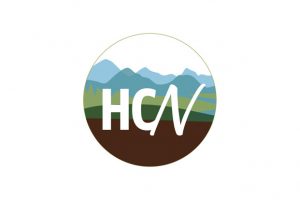What’s The Point?
What is the all buzz about acupuncture? It seems to be everywhere now and there are many different techniques and terminologies – Traditional Chinese Medicine (TCM), dry needling, trigger point needling, Intra Muscular Stimulation (IMS)…
What does it all mean?
Firstly, acupuncture is a safe and effective, natural and drug free way to eliminate pain and restore health. This practice originated in China and has been around for over 2000 years! Recently, western medicine has expanded its horizons and many practitioners are incorporating this into their practice – such as physiotherapists, chiropractors, medical doctors, and naturopathic doctors. There are various types of acupuncture techniques used, where a thin needle is inserted into the skin, but nothing is injected (dry needling). All techniques use pre- sterilized disposable needles of various lengths that pierce the skin or muscles. These needles are typically left in the tissue anywhere from a few seconds to 20 minutes. Occasionally, the needles are hooked up to a small electrical current, called electro-acupuncture.
Classical acupuncture, or Traditional Chinese Medicine (TCM), involves inserting needles into specific points along 12 meridians on our body. These meridians are channels of energy mapped out along the surface of our skin that relate to internal organs (small intestine, gall bladder, heart, liver…). Needling certain points along these meridians is believed to help restore imbalances in the flow of Qi (“chi”), or energy throughout our body. Anatomical or medical acupuncture are Western forms of acupuncture that integrate current knowledge of anatomy and physiology with classical acupuncture techniques (TCM). Motor point needling, dry needling, myofascial acupuncture all describe similar techniques used to target the neuromuscular junction of the muscle (where the nerve innervates the muscle) or trigger points in the muscle belly. Trigger points are tight, palpable knots that can be painful and often refer pain to other areas of the body. These techniques specifically target injured muscles that have contracted and shortened from distress. Dry needling may provide nearly instantaneous relief from the painful trigger point as well as improve function and mobility.
Intramuscular Stimulation (IMS) is another form of dry needling. IMS is a total system for the diagnosis and treatment of myofascial pain syndromes. Initially developed by Dr. Chan Gunn in British Columbia in the 70’s, this technique follows the radiculopathic model of pain. The needling sites often target both the locally tight muscle bands and the nerve root at the spinal level that may have become irritated and hypersensitive. For example, elbow pain and a local tendinopathy may have its origins at C6 where the nerve root is existing the spinal cord. If you only treat the local elbow symptoms, you wouldn’t be targeting the whole system.
How does it work?
The penetration of a needle into normal muscle tissue should be painless with no effect. Penetration into tight, shortened muscle tissue that is supersensitive will cause a ‘grasp’ of the muscle around the needle. This is often described as a cramping sensation. When this occurs, a stretch receptor in the muscle is stimulated which then produces a reflex relaxation phase. Secondly, the needle causes a micro irritation that draws blood to the area and stimulates the healing process. Thirdly, by relaxing the tight muscle bands the pressure on surrounding nerves, joints and soft tissue is reduced. Increased muscle flexibility, joint range of motion and reduced pain can be achieved. It is common to experience some discomfort when tight muscle bands are being released. This is similar to the soreness experienced after a deep tissue massage or an intense workout. This sensation is temporary and may last from 12-48 hours. There is also the potential for a superficial bruise, but this is not serious.
All forms of acupuncture are thought to directly stimulate local nerves in an area, thereby stimulating impulses that connect to the spinal cord and brain. These impulses help stimulate the production of endorphins in the brain, our natural pain relief hormones.
Furthermore, neural pathways are stimulated that inhibit the pain perceived in our body, therefore causing an analgesic effect. In other words, happy hormones are released in our body that lessen the pain!
Classical acupuncture points can stimulate weak muscles and direct energy and blood flow to an area to alleviate pain, improve circulation, and speed the healing process. Motor and trigger point release can target those stubborn knots that reduce flexibility, compress nerves and cause pain. The combination of these treatments in addition to manual therapy and prescribed exercises can be very effective in restoring muscle balance, function, alleviating painful syndromes, and enhancing performance.
Our physiotherapists at Bragg Creek Physiotherapy offer a variety of techniques with certifications through the Acupuncture Foundation of Canada, Gunn IMS, and Neurofunctional Acupuncture. If you are struggling with a stubborn injury that just isn’t getting better, these techniques might help get you progress to the next stage of healing.
by Jennifer Gordon
BSc. PT, GunnIMS, AFCI
Physiotherapist, Bragg Creek Physiotherapy
www.braggcreekphysio.com

























